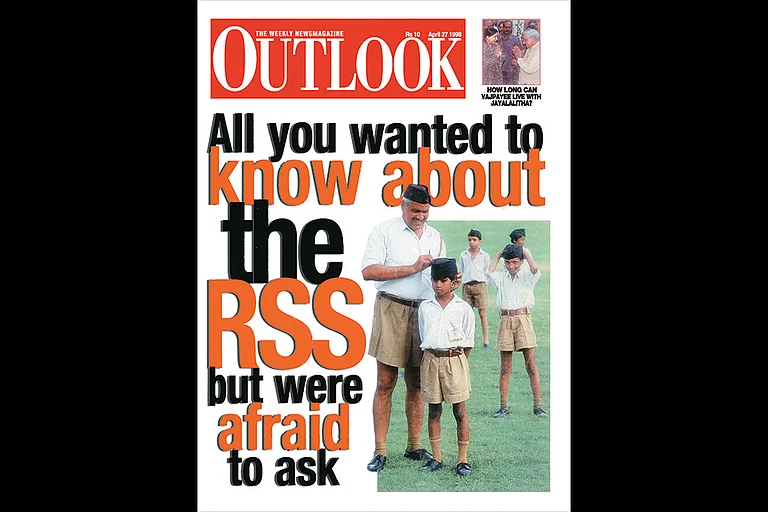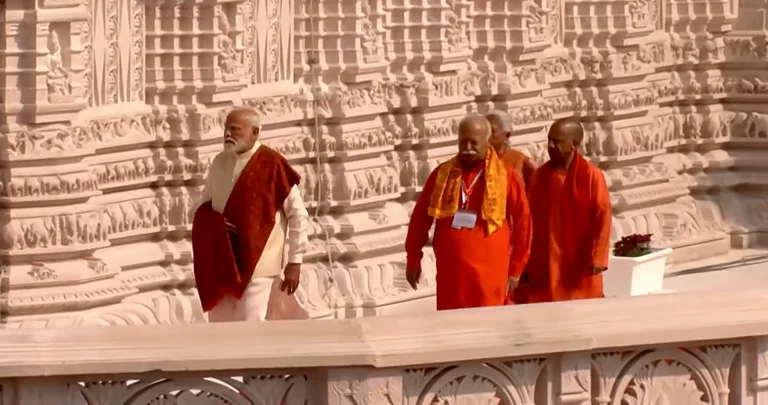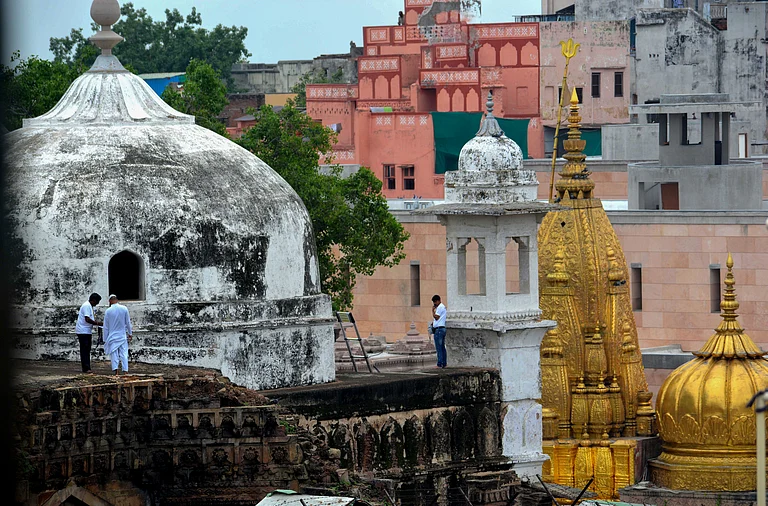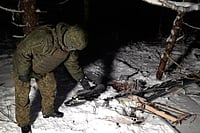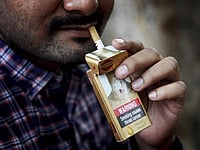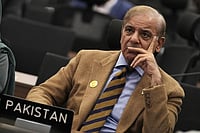Early this month, a group of Jain monks and several leaders of the Vishwa Hindu Parishad visited the mosque, Adhai Din Ka Jhonpra, and claimed that a Sanskrit school and a Jain temple existed there. On the website of the Archaeological Survey of India (ASI), the monument has been listed as a mosque built by Qutub-ud-Din-Aibak, the first Sultan of the Delhi Sultanate, in AD 1199. “A large number of architectural members and sculptures of temples are lying inside the verandah of the complex for safety and security purposes by the department which shows the existence of a Hindu temple in its vicinity during circa 11th-12th Century AD,” the description also adds.
This is not the first time such claims have been made regarding mosques in the country. In fact, more than often, the Union Government’s ASI has been at the centre of controversies and criticism for reinterpreting the country’s cultural past.
In light of another mandir-masjid dispute in Ajmer, Outlook takes a look at some controversial surveys of mosques carried out by ASI after allegations that a temple was there beneath the complex.
Babri Masjid
On December 6, 1992, a Hindu mob razed the 16th century Babri Masjid in Ayodhya, triggering bloody riots that killed at least 2,000 people across India. To reiterate the claim that the mosque was built on the remnants of a temple, a 2003 report released by the ASI is often cited.
As Outlook has reported before, the ASI compiled the 574-page report with details about the purported discovery of temple ruins at the excavation site, within just 10 days of the completion of the survey on August 12. The Sunni Waqf Board, a party to the Ayodhya title dispute case, had said then that the ASI’s report was “vague and self-contradictory”.
Sixteen years after the ASI survey, the Supreme Court in 2019 ordered the construction of the Ram Temple and referred to the 2003 ASI report extensively in its judgment.
Gyanvapi-Kashi Vishwanath Temple
The ASI undertook a survey of the Gyanvapi mosque complex on the orders of the Varanasi court to ascertain whether the mosque was “constructed over a pre-existing structure of a Hindu temple”. The long-standing dispute dates back to 1991 when a petition was filed by three local Hindus on behalf of three Hindu deities — Shiva, Shringar Gauri, and Ganesha, before the Varanasi high court demanding the restoration of Gyanvapi land to the adjacent Kashi Viswanath temple, removal of Muslims from the complex, and demolition of the mosque.
After granting extension eight times, the ASI submitted its 1000-page report to the court on December 18, wherein it declared that a “large Hindu temple” existed there prior to the construction of the existing structure (the mosque) and that parts of the temple were used in the construction of the Islamic place of worship.
As of January 2024, upon the orders of the Supreme Court, a chosen Hindu priest will offer worship inside the cellar or tehkhana in the Gyanvapi premises while Muslims can use the mosque and the surrounding courtyard for performing namaaz. The court listed the case for final disposal in the third week of July.
Bhojshala-Kamal Maula
The dispute over Bhojshala in Madhya Pradesh dates back to the early 2000s. The ASI protected site, which the Hindus claim is a temple of Goddess Saraswati while the Muslims consider it as Kamal Maula mosque, has been at the centre of violent incidents over the past few years.
The root of the conflict lies in an ASI notification dated 2003 that allowed Hindus to offer prayers for Basant Panchami at Bhojshala-Kamal Maula mosque from dawn to noon and again from 3.30 pm to dusk, leaving the hours between 1 pm and 3 pm in the afternoon for the Friday Namaz for Muslims.
However, in 2003, 2013 and 2016, Basant Panchami fell on Fridays – these were the days when the town of Dhar witnessed a spate of violent incidents with Hindutva activists refusing to vacate the premises.
In response to a public interest litigation (PIL) filed by an organisation Hindu Front for Justice, challenging the ASI order of April 7, 2003, imposing restriction on Hindus to worship at Bhojshala daily, the Madhya Pradesh High Court ordered the ASI to conduct a "scientific survey" of the complex. Although the survey started on March 22 this year, the ASI filed an application a month later, stating it needed some more time for the survey to understand the nature of exposed portions of the structures in the disputed premises.
Krishna Janmabhoomi
The Krishna Janmabhoomi-Shahi Idgah dispute erupted after a Lucknow resident and advocate Ranjana Agnihotri and six others originally filed a plea in the lower court in Mathura to remove the 17th century Shahi Idgah mosque from the complex it shares with the Katra Keshav Dev Temple, close to the spot known as 'Krishna Janmabhoomi'.
They had claimed in the plea that Shahi Idgah Masjid is constructed on a part of 13.37-acre land belonging to the Sri Krishna Janmabhoomi Trust and demanded that the mosque be removed and the land returned to the trust.
While the Allahabad High Court allowed a primary survey of the Idgah complex by a court-monitored three-member team of advocate commissioners last year, the top court had on January 16 stayed the operation of this order. The stay continues to remain in place.







